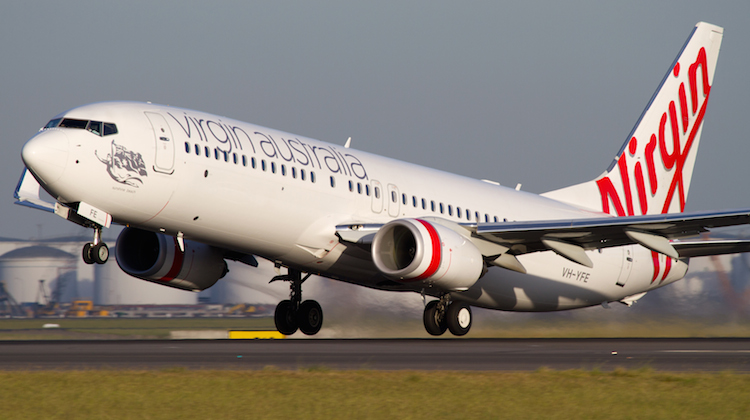
Virgin Australia has forecast an improved second half as it expects to gain a $50 million benefit from lower fuel prices over the remainder of 2014/15 and works to turnaround a loss-making international division.
The company on Thursday confirmed a statutory loss of $47.8 million for the six months to December 31 2014, an improvement from the $74.3 million loss in the prior corresponding period as the airline group reduced costs and lifted airfares amid ongoing weak consumer sentiment.
Virgin chief executive John Borghetti said the company had only a $3 million gain from the sharp decline in fuel prices in the first half.
However, he forecast a much more substantial boost to the bottom line from fuel over the second half of 2014/15.
“We should see a benefit in the second half of around $50 million if the oil price remains at the current level,” Borghetti told reporters in Sydney on Thursday.
Virgin returned to profit on an underlying basis in the first half, posting an underlying profit before tax of $10.2 million for the six months to December 31, which Borghetti said was a significant improvement in financial performance when compared with the underlying loss before tax of $45.4 million in the prior corresponding period.
Revenue rose six per cent to $2.38 billion.
The airline group said domestic yields rose three per cent in the half as it managed to gain more passengers from the corporate and government centre, while underlying cost per available seat kilometre (CASK), which excluded the impact of fuel and foreign exchange, fell 3.2 per cent over the same period.
Borghetti guided the market to a better second half without providing specific figures.
“We will continue to remain customer focused, and by doing so, we will be a more resilient and efficient business, with a stronger balance sheet, better yields and a diversified earnings base,” Borghetti said.
“As a result, we expect an improved performance in the second half of the 2015 financial year compared to the second half of the 2014 financial year.
“However, due to current market conditions, we are not able to provide more specific guidance.”
Virgin’s domestic results, which incorporate the financial performance of its Velocity frequent flyer program, showed a fourfold increase in earnings before interest and tax (EBIT) to $103.8 million, from $25.9 million in the prior corresponding period.
“Good momentum is building in our domestic business,” Borghetti said.

However, its international operations – the airline’s long-haul network comprises Los Angeles and Abu Dhabi, while its short-haul international flying is to destinations in the Pacific, New Zealand, Bali and Phuket – deteriorated, posting an EBIT loss of $49.5 million in the first half, compared with a loss of $31.9 million a year earlier.
Borghetti described Virgin’s international network as a small but important part of the business that represented about 14 per cent of total passengers.
The airline had already introduced some measures in a bid to reverse the trend, such as schedule changes for flights to Bali, moving some roles from New Zealand back to its Brisbane operations centre and the introduction of business class across the Tasman to improve yields.
Borghetti said there was more to come.
“It is underperforming and we do need to improve it,” Borghetti said.
“Where we have been feeling the most pressure is the short haul Asian market and the route on the way to Europe.
“I’m very confident with what we have in mind we will see it turn around.”
The company said it had already achieved cost reductions of $312.6 million as part of its five-year, $1 billion savings target due to be achieved by 2017.
“Let there be no doubt that the key driver of this improvement has has been the group’s success in executing the Virgin vision strategy which is all about driving sustainable cost reduction and growing yield,” Borghetti said.
And the brakes were clearly on capacity growth at Virgin in the half, with available seat kilometres (ASK) rising just one per cent in the six months to December 31.
Virgin reported most of the key financial figures for the first half when it published second quarter figures two weeks ago.
In other news, Borghetti said the launch of its new business class seat on board its Airbus A330-200 aircraft that fly from Perth to east coast capitals has been pushed back to “mid-year” as the airline sought to “tweak” a few things. Virgin has initially planned to have the first aircraft fitted with the new seats by March. All six A330s were still on track to be reconfigured by August, Borghetti said.
Meanwhile, its Velocity frequent flyer program had grown to 4.8 million members, with about 2,300 new members joining each day.
















John Williams
says:we will know that everything has turned around when Virgin shareholders start receiving dividends. I suspect QF shareholders are going to receive dividends before Virgin